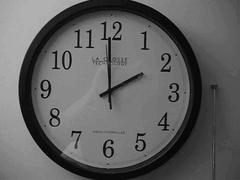About time
Right now, it’s @878.93 on the internet – 5 minutes past 3 o’clock in real life. But really, it feels more like 4 o’clock. My body feels like it’s almost time to start making dinner.
In my part of the world, the United States, today is the day we switch from Daylight Savings Time to Standard Time. That means we turn all our clocks back one hour, adding a mysterious hour of sleep in the middle of the night.
On Standard Time, mornings feel brighter, afternoons feel sleepier, and nights feel darker and more sudden. It will stay like this until spring, when we artificially lengthen our days by switching back to Daylight Savings.
Daylight Savings started in the U.S. during World War I, as an effort to conserve electricity by extending the time we spend in the sunlight.

There’s nothing like winding a clock back and forth to make you realize how weird the concept of “time” is. Why should our lives revolve around hours, if on some arbitrary day of the year, we can gain one or lose one?
The switch between DST and ST can cause a little confusion, and sometimes even a literal jolt in our bodies; car accidents and heart attacks are known to increase when we mess with time.
What’s even more weird is to think that, as we use it, is somewhat new.
When we existed in disparate communities, a sundial, a churchbell, or a water clock was a good enough way for a common person to tell the time.
Now, since our cities have connected through railways, communications, and air travel, those measurements were no longer good enough. Societies invented time standards to synchronize distant clocks. By the 1960s, physicists settled on the “most precise” standard of time, atomic time, by counting the vibrations of a cesium atom. Even UTC, the time standard that civilizations around the globe set their clocks to, has trouble keeping up with atomic time, accomodating for the gaps with leap seconds that are called six months in advance.
I sometimes wonder, what did it feel like to live in “unprecise” time, before we raced against cesium atoms?
I’m not imagining the world being any less hard, but I do imagine it feeling a little less rigid and mechanical. I imagine those liberating moments when you don’t feel chained to time being a little more frequent.
Stretching out the time that we take to make dinner and settle down at home, without needing to be reminded that work takes up most of our hours.
According to medievalist Dorsey Armstrong, people in the Middle Ages slept in two phases. They’d fall asleep at sundown, and then wake up in the middle of the night to do whatever – whether it was visiting their friends, doing chores or hobbies, praying, or making love – before falling into a second sleep.
This, says Armstrong, is a more natural sleep cycle; only with the invention of electric lighting and the need to work longer hours did it become common to condense sleep into one long, solid block.
Another thought about time. After the French Revolution, the French Republic attempted to adopt decimal time. It was part of their larger campaign to convert units of measurement to base-10 systems.
Today, most societies use the metric system, but decimal time was quickly abandoned. If we were using it, an hour would feel twice as long.
Can you imagine how much that would drag?
I suppose I’ll end by saying I’ve always found broken clocks very creepy. In middle school, there was a broken clock in our gymnasium, high up on the wall where no one could reach. It was perpetually 10:33. I would imagine a world where time did not move at all, and yet, we were all still moving.